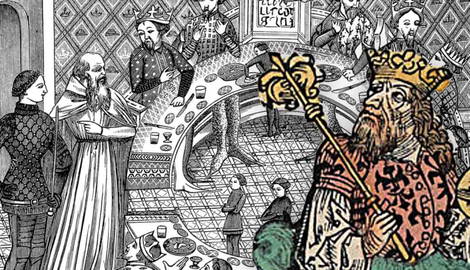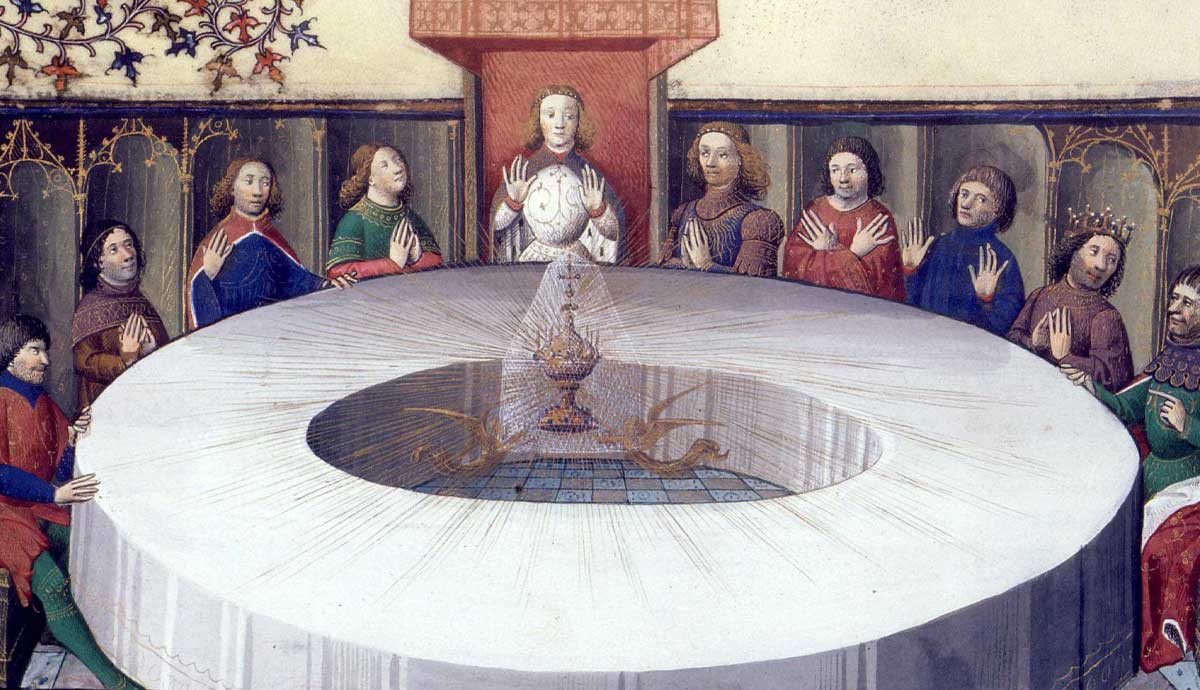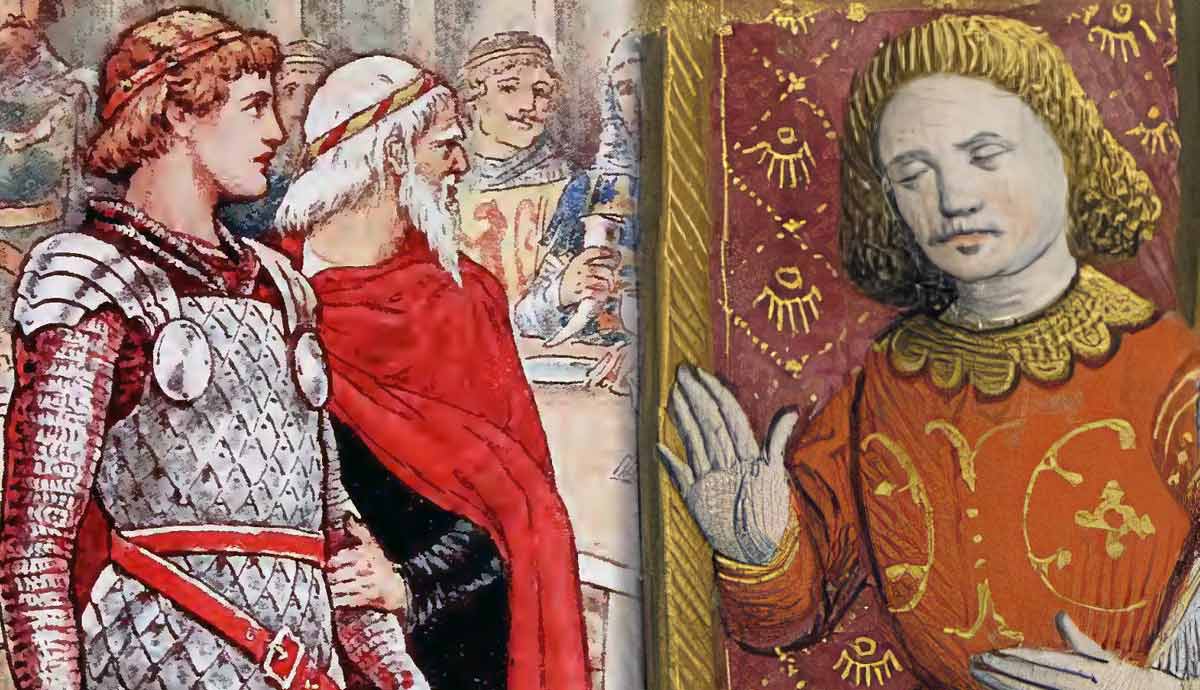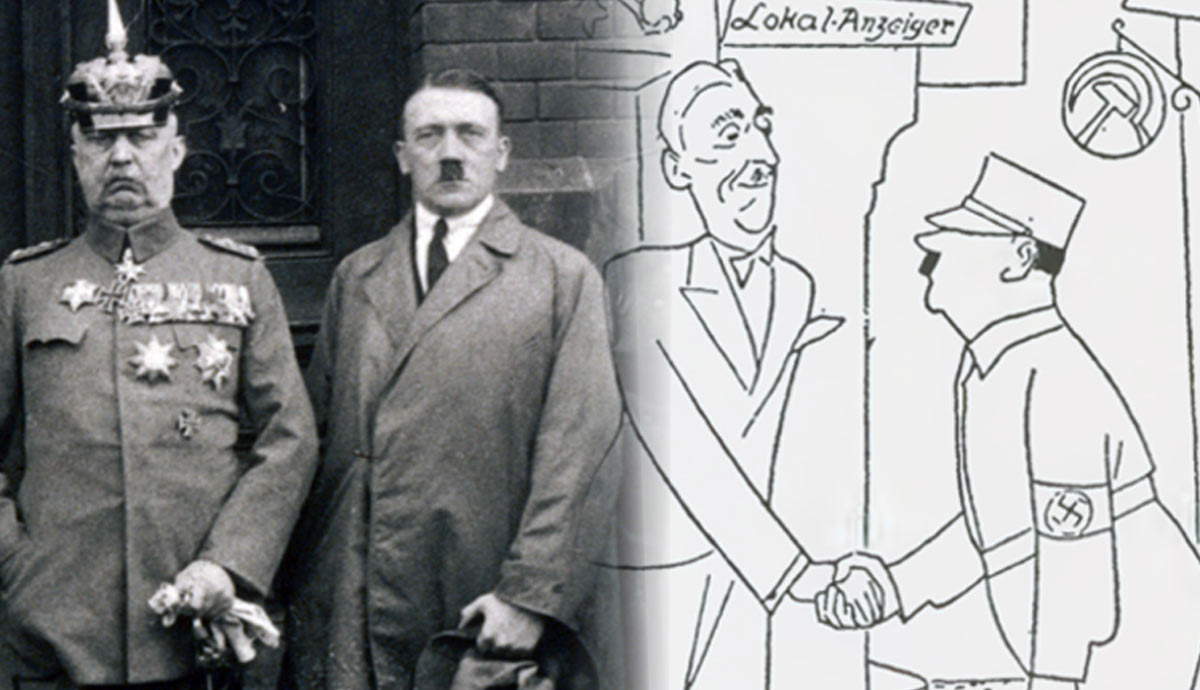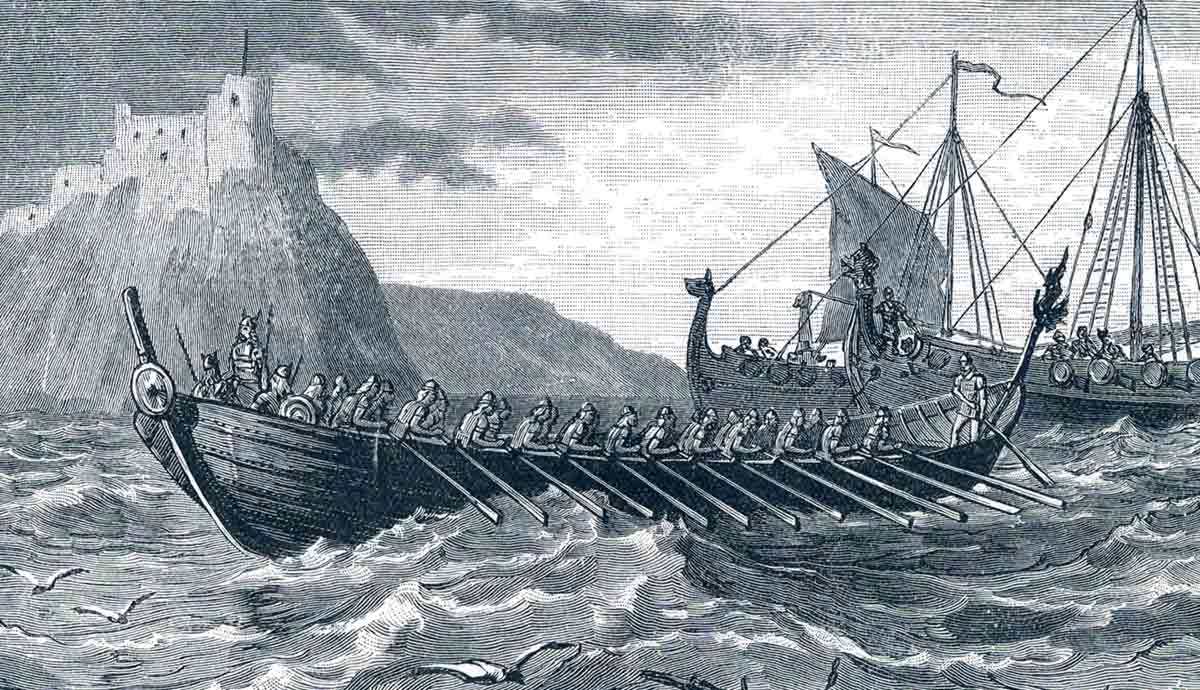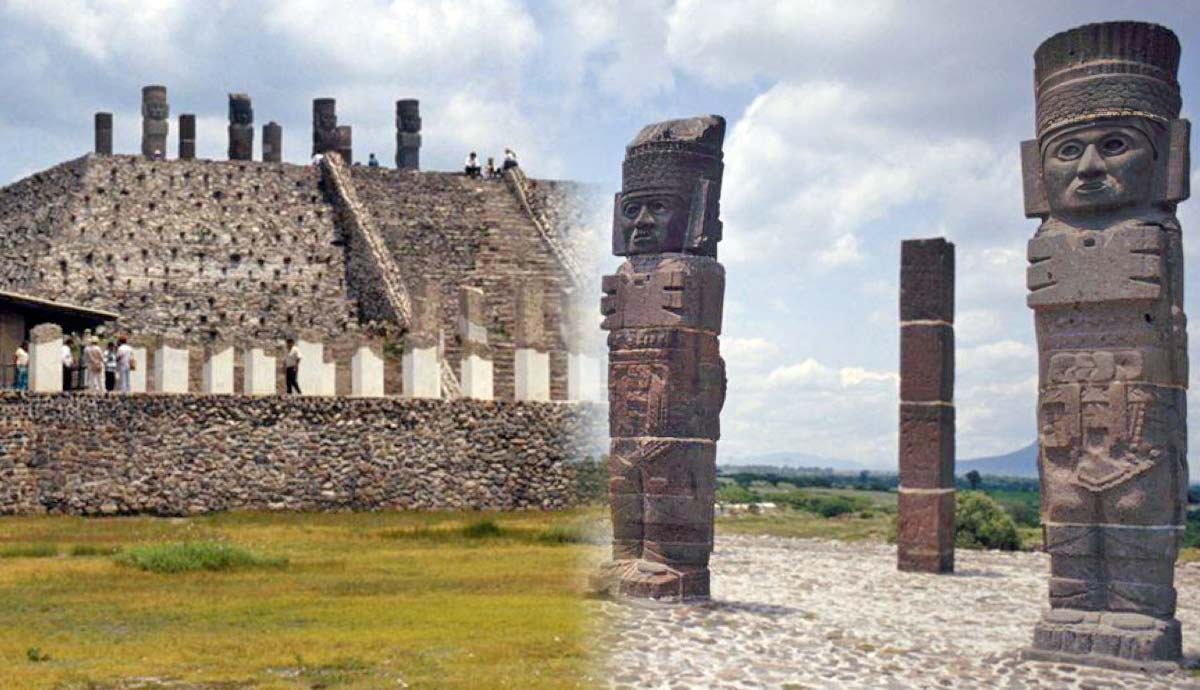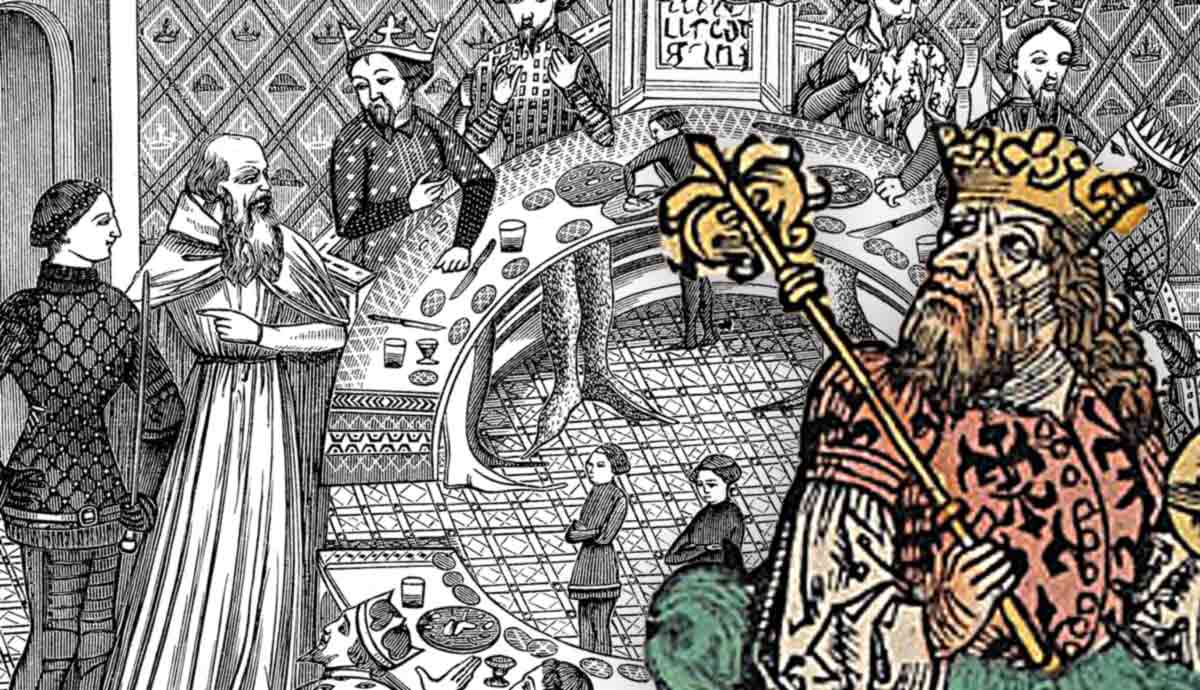
King Arthur may be one of the best-known names in British history, but also one of the most mysterious. No contemporary 5th or 6th century sources refer to the legendary leader, bringing into question whether he ever really existed.
The earliest record that mentions Arthur, according to many modern sources, is the Historia Brittonum, which was written in c. 830 CE. This is nearly three hundred years after Arthur supposedly lived. However, there are in fact a few earlier traces of the existence of King Arthur.
King Arthur in Y Gododdin

The most famous appearance of Arthur prior to the Historia Brittonum is in a poem called Y Gododdin. This is attributed to a poet named Aneirin who lived in the late 6th and early 7th centuries. While it is impossible to confirm that the poem really was written by that poet, linguistic analyses suggest that it dates from about his time, about a century after the time of King Arthur. The event described in the poem is the Battle of Catraeth, which was a conflict between the Britons and the Angles in about the year 600.
In this poem, the various warriors who fought and died in the battle are praised for their valour. One of them, named Gwawddur, is said to have “fed black ravens on the rampart of a fort, though he was no Arthur.” The first part of this statement is in reference to the dead bodies that resulted from Gwawddur’s success in the fighting. In fact, he is directly said to have slain 300 enemy soldiers.

The second part of the line is particularly interesting. After mentioning his great success in battle, it follows this statement by saying that this occurred “though he was no Arthur.” At first glance, this appears to suggest that the poet is essentially saying that, although Gwawddur was good, he was not as good as Arthur. On the other hand, some scholars have argued that this does not make any sense in the context of the poem. After all, it is supposed to be praising the warriors, not criticising them.
For this reason, there is an argument to be made that this line portrays Arthur as a superhuman figure, not a historical personage. One scholar, Caitlin Green, argued that “Arthur was clearly viewed by the poet as the impossible comparison.” Effectively, the poet is saying that Gwawddur was able to achieve such things even though he was not a superhuman figure of myth. Thus, it still gives praise to Gwawddur.

On the other hand, the same basic praise might be achieved if someone of a sufficiently higher status was used as a comparison. There is no indication in the poem or in later medieval material that Gwawddur was a prominent figure, such as a king. It appears that he was simply a minor warrior.
Thus, it is not necessary to interpret Arthur in this line as a superhuman figure. If he was a powerful king, as the later medieval material makes him, then his status would have been sufficiently higher than Gwawddur’s for the same logic to apply. One scholar, John T. Koch, observed that Arthur “is presented as the unrivalled paragon of martial valour.” While this is a valid observation, this is not inconsistent with him being a powerful king in contrast to Gwawddur’s relatively insignificant status.
In fact, whether this line about Arthur was in the original poem at all is debated. It is not in the A text, but it is in the B text, which is considered more archaic. John T. Koch, one of the foremost authorities on the linguistics of this period, concluded that it was indeed part of the original poem.
Marwnad Cynddylan

While the reference to Arthur in Y Gododdin is relatively well known, there is another early source which appears to mention Arthur which is almost always overlooked. This is a poem called Marwnad Cynddylan. Similar to Y Gododdin, it is a death-song, a poem created to praise the exploits of a fallen warrior. In this case, it is about Cynddylan, a king of the medieval Welsh kingdom of Powys in the mid-7th century. The poem is generally accepted as having been composed shortly after his death.
In one of the lines, there is a word which appears as “artir.” However, this comes after the word “canawon,” meaning “whelps,” in the sense of a son or descendant. The word “artir” refers to land, which does not make sense in conjunction with “whelps.” For this reason, many scholars today argue that this should be amended to the name “Arthur.” In other words, the poem is describing Cynddylan and his brothers, either figuratively or literally, as descendants of Arthur. Interestingly, this poem specifically calls him “great Arthur.”
Preiddeu Annwn

There is another early source which is far more significant than the above. This is a poem entitled Preiddeu Annwn. This title essentially means “Voyage to the Otherworld.” It is attributed to Taliesin, another poet of the late-6th century, although this attribution is generally rejected.
This poem tells the story of Arthur (definitely presented as a king) setting off on an expedition to a land called Annwn. This is widely interpreted as a kind of Otherworld. It tells the story of the voyage and of some of the events that happened there. The journey is a tragedy, with only seven men returning.
Traditionally, this poem has been dated to about the 10th century or so. However, in fairly recent years, John T. Koch has argued that the poem preserves certain linguistic forms which date from an older stage of Welsh. According to his analysis, Preiddeu Annwn most likely dates back to the mid-8th century. This would make it the earliest source for any part of Arthur’s career, significantly pre-dating the Historia Brittonum.
John Leland

Another source worth considering is an extremely obscure record from the 16th century. Firstly, we need to consider a letter written by Welsh scholar William Salesbury, the translator of the 1567 Welsh New Testament. In a letter to Archbishop Parker, Salesbury stated that he had access to very old records of donations at the monastery of St Davids, in which the names were written in a very different style to the writing used in his own day. Salesbury then provided some examples, writing an exact copy, a facsimile, of some of the names preserved in records that he had. Some of these were from witness lists to land grants.
Notably, scholar Caroline Brett observed that the script of Salesbury’s facsimile “looks very much like the script of the earliest 9th-century charters written into the Gospels of St. Chad.” Therefore, the evidence is that 9th-century records still existed and were available in the 16th century, specifically at St Davids. In that same century, John Leland made an excursion through Wales and copied part of a witness list from St Davids.

One of the witnesses is recorded as: “Arthur son of Pedr, but more recent than the old Arthur.”
Arthur son of Pedr was a king of the early 7th century. The fact that this witness list specifically refers to him as “more recent than the old Arthur” is fascinating. It shows that there was a notable Arthur who lived earlier than the early 7th century.
This is almost certainly a reference to King Arthur of legend. But the important question is, when does this record date from? The land grant itself would have had to have occurred in the 7th century, but that does not prove that the manuscript used by Leland dated from that time. On the basis of the evidence from Salesbury, Sims-Williams suggests the following: “It was perhaps from a 9th-century confirmation of a 7th-century grant that Leland copied [the aforementioned witness list].”
Therefore, although we cannot be certain, this apparent reference to King Arthur may well be contemporary with the Historia Brittonum.
The Earliest Traces of King Arthur

In summary, there are a number of traces of King Arthur that seem to pre-date the Historia Brittonum, which is usually presented as Arthur’s earliest appearance.
One of these early traces is quite well known, being the intriguing mention of Arthur in Y Gododdin. As argued by John T. Koch, this may well date back to the early 7th century. A poem from the mid 7th century which seems to mention Arthur, if we accept a likely emendation of the text, is Marwnad Cynddylan.

More significantly, the poem Preiddeu Annwn may well date back to the mid 8th century, pre-dating the Historia Brittonum by a significant margin. This would therefore be the earliest account of any part of Arthur’s career, and it explicitly presents him as a king.
Finally, there is the apparent reference to Arthur in John Leland’s copy of part of a witness list preserved at St Davids. Although its date is very uncertain, there is a good chance that this dates to the 9th century, making it contemporary with the Historia Brittonum.
